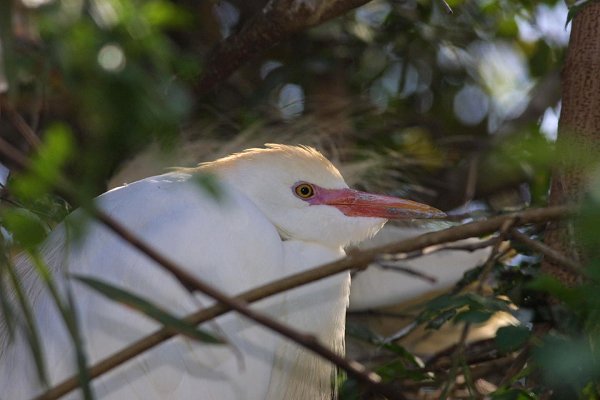
Date: 2003-04-12
Lens: Canon 400mm F5.6

 Cattle Egret
Bubulcus ibis
Cattle Egret
Bubulcus ibis
 Description
Description
Cattle Egret are often found feeding in pastures or other open habitats, far away from water. They are closely associated with livestock and feed on insects, amphibians, and worms found in the livestock fields. Only during breeding are these birds found readily near water.
This is an Old World species. It's believed that this bird crossed the Atlantic Ocean from Africa to South America in the late 19th and early 20th centuries. It's thought that maybe a series of storms carried the birds. Once in South America, the birds slowly migrated north, covering much of North America today.
General: Entirely white plumage. Short, thick bill. Sexes similar. 17 inches in length.
Adult Alternate: Buff colored feather plumes on head, neck, and back. Orange-red bill and legs. Lores may become purple colored.
Adult Basic: Yellow or dull orange bill. Dull orange legs.
Immature: Similar to adult basic, but has dark legs.
Open fields, pastures, agricultural areas, and marshes.
 Nesting
Nesting3-5 pale blue eggs. The eggs have a 22-26 day incubation period. Fledging occurs in 30 days. The nest, which is made from sticks, is built in a tree or bush in a marsh. Nests in colonies with other herons.